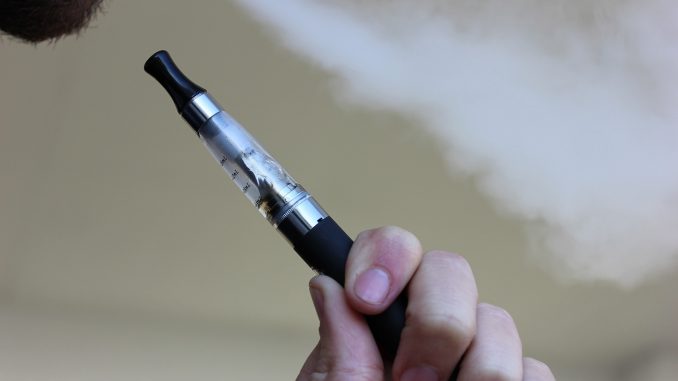
With Canada’s opioid crisis leading to a tragic uptick in overdose deaths, momentum is now building among policymakers and public health experts alike to double down on the harm reduction approaches which have helped other countries—including Portugal and Estonia—turn around overdose epidemics, including the decriminalization of small quantities of illicit drugs and safer supply programmes.
Something evidently needs to change. Over the past 25 years, the use of opioids, methamphetamine, cocaine and its derivatives has remained consistently high across Canada, and more than 21,000 people have tragically died from preventable toxic drug poisonings. The situation has only been exacerbated by the increasingly common use of fentanyl as an additive, and traditional approaches to drugs policy are evidently falling short at tackling the growing public health crisis. Indeed, the number of illicit drug users has increased globally despite increasingly severe enforcement in many countries, and studies have not found an obvious relationship between the toughness of anti-drug laws and levels of drug use.
It’s welcome news, then, that momentum is building in Canada for a shift towards a drugs policy centred around harm reduction. This positive development, however, only makes it more mystifying that Canada is swiftly moving in the opposite direction with regards to e-cigarettes. In June, Health Canada proposed draft regulations that would restrict all flavoured liquids except for tobacco, mint and menthol. The measures would also curb the use of most flavouring ingredients, including sugars and sweeteners, in vaping products.
The ostensible purpose of the flavour restrictions is to curb young people’s use of nicotine products, but the move has nonetheless alarmed public health experts and industry leaders across the country. For one thing, despite relentless advocacy from anti-vaping NGOs and Bloomberg Philanthropies, real-world experience has suggested that flavour bans may not have the desired effect on young people—according to a study by the Yale School of Public Health (YSPH), San Francisco’s decision to ban all flavoured vape liquids may have doubled high school students’ probability of using conventional cigarettes, which are far riskier than vapes. In fact, following the flavour ban San Francisco saw a 30 percent increase in underage cigarette use for the first time in more than a decade, while comparable districts without the prohibition on flavoured vapes saw a continued decline in underage smoking rates over the same period.
What’s more, flavour bans will almost inevitably cause adult smokers to consume more conventional tobacco products, with devastating effects on their health. In fact, Health Canada itself acknowledges that the proposed flavour ban would prompt an increase in purchases of conventional tobacco products, a shift which would be highly concerning given that smoking is estimated to be roughly around 20 times more harmful than vaping.
Alarmingly, Canada is far from the only country where vaping has emerged as a peculiar blind spot for an otherwise progressive suite of policy approaches to harmful behaviours and addiction. The Netherlands, for example, has long been seen as an example of a successful, harm-reduction centred drugs policy— yet is falling into the same trap of planning to ban flavoured e-cigarette liquids, a move likely to drive up smoking rates across the country.
The Netherlands’ progress in the battle against combustible tobacco consumption has been hard won. In 2007, nearly one quarter of the population smoked daily. This number had fallen to 16 percent in 2018, and close to one third of smokers made a serious attempt to quit in 2019. Dutch anti-vape policies, then, read like a bizarre public health pivot which could send as many as 260,000 Dutch vapers back to smoking.
Several other European countries have already implemented flavour bans similar to what the Netherlands is now contemplating. Finland, for example, banned all e-cigarette flavours except tobacco flavour all the way back in 2017. Neighbouring Estonia, which is otherwise known for its successful implementation of harm reduction programmes to turn around a serious opioid crisis, followed suit in 2019.
Unsurprisingly, neither case has been a public health success. The counterpart to Finland’s low vaping rates are its high rates of people using snus, a type of oral tobacco popular in Scandinavia which, while likely safer than smoking combustible tobacco, has been associated in studies with increased risk of several types of cancer, high blood pressure, type 2 diabetes and other serious health conditions. Most troublingly, Finland has seen a significant recent increase in the proportion of young people, including adolescents, using snus daily.
Estonia, meanwhile, has already softened its draconian e-cigarette regulations after they provoked deleterious consequences. Tallinn began allowing menthol flavoured e-liquids again in 2020 and decided to suspend an excise duty on e-cigarette liquids after the tough rules led to a blossoming black market and an uptick in smoking, according to Estonian MP and harm reduction advocate Tarmo Kruusimäe.
Still, Estonia’s remaining prohibition on many of the e-cigarette flavours which adult smokers find attractive is one of the strictest in Europe and a departure from the Baltic country’s otherwise progressive harm reduction policies.
Despite increasingly pragmatic approaches to addiction when it comes to drug use, vaping certainly seems to be a persistent blind spot for authorities around the world. Until this changes, it will be impossible for public health authorities to get a handle on the unrelenting tobacco epidemic.


Leave a Reply